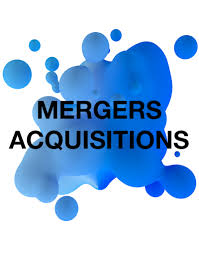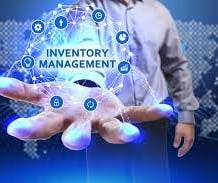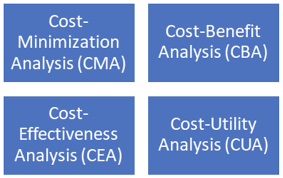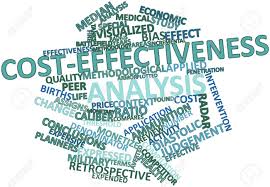ALBA Consultants provide a wide range of personalized and customized consulting services for startups, early stage, and mature companies in the medical device, biotechnology, biopharmaceutical, healthcare, nutritional supplementation, and industrial manufacturing industries.


Our services
DATA FORENSICS
POWERED BY AI
Looking at data in the correct way is crucial in solving a myriad of business and non-business matters. Insight and the uncovering of hidden data was used to solve a critical issue that affected the outcome of World War II.
During aerial conflict, fighter planes would come back from battle with bullet holes. The Allies found the areas that were most commonly hit by enemy fire. They sought to strengthen the most commonly damaged parts of the planes to reduce the number that was shot down.
A mathematician, Abraham Wald, pointed out that perhaps there was another way to look at the data. Perhaps the reason certain areas of the planes weren't covered in bullet holes was that planes that were shot in those areas did not return. This insight led to the armor being re-enforced on the parts of the plane where there were no bullet holes.
The story behind the data is arguably more important than the data itself. Or more precisely, the reason behind why we are missing certain pieces of data may be more meaningful than the data we have.
Data drives businesses today. Businesses need DATA FORENSICS to run efficiently and optimally.


DATA FORENSICS (data analysis, data mining ("DM"), and artificial intelligence ("AI"):
Ø Provides BUSINESS INTELLIGENCE ("BI")
Ø Analyzes large amounts of raw data
Ø Turns raw data into actionable insight to optimize business decisions and performance
Ø Uses multi-dimensional hierarchical reduction to eliminate irrelevant material from the discovery process
Ø Allows for the discovery of relationships, patterns, and trends across a dataset to be able to craft a strategic direction or solve a specific problem
Ø Can be used to uncover HIDDEN DATA (reveals answers to questions and insights that managers did not know to ask)
Ø Enables you to find a "needle in a haystack"
Examples of the use of DM combined with AI
Healthcare (hidden relationship): DM+AI is used to assess the relationship between symptoms and a specific disease; how often is that symptom mentioned in relationship to a disease. A high correlation between the symptom and mentions of the disease could help identify the best drug to treat that disease.
Healthcare (discoverability): If you were looking for a link between carcinogens from tobacco and a specific type of cancer such as lung cancer. A 'traditional' search could provide data that mentions carcinogens, tobacco and/or lung cancer. Using DM+AI techniques, you could retrieve information where only specific carcinogens have an effect on the lungs.
Healthcare (pattern discernment): can be used to match the biochemical properties of molecules to a viral protein's properties in order to identify a molecule likely to bind to the virus.
ALBA Consultants have used their DM+AI technology to identify at-risk patients (two patents on this algorithm) for a large managed care organization, predicted future hall of fame sports figures, and uncovered a "needle in a haystack" effect from the usage of a certain drug. They have also uncovered an oddity at a hospital: why a disproportionate number of patients were older than 100 years.


BACK-END ECOMMERCE WEBSITE DEVELOPMENT (Database creation and management)
The back-end (server-side) of an eCommerce website is the data access layer that holds products, orders, customer information, prices, promotions, product images, order details, and fulfillment.
THE BACK-END:
Ø Created massive database to process, store, and transfer data to and from the customer-facing side to make the front-end interactive
Ø Designed interface for customers to view products, place orders, and manage their purchases using their own devices
Examples of Back-End Ecommerce Website Development
ALBA Consultants have developed dozens of Ecommerce websites. In partnership with a front-end developer, we have produced gorgeous, hierarchical reductive websites where product identification occurs in three clicks or less. We have also developed product wizards for easy identification and selection, when you are not sure what you want or need to purchase.
BUSINESS PLAN PREPARATION
Ask any successful sports coach how they win so many games, and they'll tell you they have a unique plan for every single game. The same logic applies to business. If you want to build a thriving company that can pull ahead of the competition, you need to prepare for battle before breaking into a market. ALBA Consultants customized business plans provide: an effective strategy for growth, an operation plan on how to get there, a vehicle to raise money from investors and banks, and an assessment of future financial needs.


Purpose of a Business Plan:
Ø Outlines the company's goals and sales strategies
Ø Guides the executives along the journey of growing a company
o Details how a company will achieve its goals
Ø Keeps the managers on the path toward success
Ø Convinces potential investors such as venture capitalists or a bank loan to provide funding
Components of a Customized Business Plan:
Ø An executive summary
Ø A market and competitive analysis assessment ("SWOT")
Ø An operational and marketing plan
Ø A financial plan with 3-5 years of financial projections
Ø And other essential components required by potential investors, as required for specific industries
Examples of Business Plan Preparation
ALBA Consultants have written dozens of business plans for companies that have raised, in total, over $50 Million from investors.


INVESTOR PITCH TRAINING FOR FUNDRAISING
What's your story? In order to raise money or get a loan, companies need to tell their story in a compelling way.
Ø Pitching to investors at an investor forum
The pitch is geared to delivering a compelling future vision of the company direction
Ø Overcoming objections to your pitch or presentation
Ø Setting a realistic pre-money valuation
One member of ALBA Consultants was the Chairman of the California Venture Forum for 10 years. In this capacity, along with his team, he trained hundreds of startup companies to present at an investor forum. After being selected to present, companies were required to attend a 3-day training course on how to create and deliver an exceptionally effective presentation or pitch that gets results. We taught participants how to convey their ideas with clarity, confidence and conviction and how to confidently answer questions and address objections with poise and eloquence.
Examples of Business Plan Preparation




MERGERS & ACQUISITIONS AND TURN-AROUND MANAGEMENT
Mergers and acquisitions
Mergers and acquisitions ("M&A") are transactions in which the ownership of companies or their operating units transfer assets and liabilities to another entity.
Types of Mergers:
Ø General mergers
Ø Parent-subsidiary mergers
Ø Triangular mergers
Ø Reverse mergers
Ø Multi-entity mergers
Purpose of Mergers:
Ø Consolidating companies or assets, with an eye toward stimulating growth
Ø Gaining a competitive advantage
Ø Increasing market share
Ø Affecting supply chains
Examples of Mergers & Acquisitions
ALBA Consultants have assisted in mergers and acquisitions in excess of $250 Million. ALBA Consultants have worked with clients to: identify companies and subsidiaries to be acquired and companies/subsidiaries wanting to be acquired, perform due diligence on mergers & acquisitions, negotiate the merger or acquisition terms, and assisted in the integration of the merged or acquired companies.
Turn-Around Management
Turnaround management is a process dedicated to corporate renewal by way of transformation
Turn-Around Management:
Ø Uses analysis and planning to save un-profitable companies
Ø Identifies the reasons for failing performance in the market
Ø Rectifies the poor performance
Ø Positions the poorly performing company for acquisition
Ø Returns companies to solvency
Turn-Around Management Consultant:
Ø Serves as a replacement CEO
Ø Makes potentially unpopular decisions that are difficult but necessary for the improvement (and continued survival) of the company
Examples of Turn-Around Management
ALBA Consultants have been responsible for the successful turn-around and acquisition of several companies. Examples include: a large veterinary laboratory and an early-stage, functional genomics company. ALBA Consultants success lies in its ability to identify the root causes affecting the poor performance and devise the appropriate transformational operating strategies to correct the decline. Once the decline has plateaued, the company can be repositioned for growth or acquisition.


PRICING STRATEGY & ANALYSIS
The term "pricing strategy" encompasses all the methods that a business owner uses to determine how much to charge for a product or service. No matter what you're selling, the price you set for your product or service can make or break your company's financial goals. Of course, the right price won't just come to you overnight.
Purpose of a Pricing Strategy:
Ø A thorough pricing strategy is a must to get customers to buy, without sacrificing a great profit margin
Ø Can help better meet customer expectations by putting reason behind higher or lower prices
o The new strategy will create a repeatable process on how your target audience and competitors will react to your pricing decisions
Ø Paired with a great marketing strategy, your pricing strategy may even help transform the perceived value of your products or services in the long run
ALBA Consultants have created and managed the pricing strategy for an industrial manufacturer for decades. ALBA Consultants developed a massive pricing database to manage over 17,000 parts with multiple price codes. When prices needed to be raised, the new prices flowed seamlessly through multiple Excel tables to populate the new prices. The new prices were then uploaded into the company's database which then populated the eCommerce website.
Examples of Pricing Strategy & Analysis




BRAND BUILDING & PUBLIC RELATIONS
Branding
Branding is the process of creating a distinct identity for a business or product in the mind of the target consumers, in order to build out the storyline and communicate the message via public relations and advertising.
Components of Branding:
Ø Creation of company/product logo
Ø Conception of visual design
Ø Construction of mission/position statement
Ø Sets the tone of voice
Ø Identifies the expected user experience
Examples of Brand Building
ALBA Consultants created an international brand for the FootMate® System (www.footmate.com). The product became a top 10 seller in the health and beauty category on Amazon. Sales climbed to over $3M in two years. The product was so popular that it attracted numerous Chinese knock-offs.
Public Relations
Public relations communicates the company's image to the outside world.
Purpose of Public Relations:
Ø Puts the company/brand in the best light possible
Ø Builds the reputation of key company personnel
Examples of Public Relations
ALBA Consultants created a "Proud To Be An American Manufacturer" public relations campaign for a company and its CEO. As a result of this campaign, the company's CEO was the recipient of numerous awards from American made organizations and was made an "American Made Hero". In addition, the company was visited by United States House of Representatives Majority leader, Steny Hoyer as well as other members of Congress and local political dignitaries.


INDUSTRIAL MANUFACTURING COMPLIANCE & INVENTORY CONTROL MANAGEMENT
Industrial Manufacturing Compliance:
Regulatory Compliance:
Ø Adhering to the regulations that apply to a company's business
OSHA compliance:
Ø Ensuring a workplace that is safe from serious hazards that can cause danger to employees
ALBA Consultants created an inventory control and management system that integrated into the company's database and eCommerce platform. ALBA Consultants created an algorithm (called available-to-promise) that was communicated through the use of API's (an API is a software intermediary that allows two applications to talk to each other. An API is the messenger that delivers a request to the provider that is making the requesting and then delivers the response back. An API enables databases to "talk" to each other), the back-end of the website was able to inform the online buyer if stock was available, how much stock was available, or if the product was out of stock.
Examples of Inventory Control & Management


Inventory Control and Inventory Management
While they both deal with aspects of inventory, inventory control is different from inventory management. Better inventory management can be achieved when inventory control is improved.
Inventory Control:
Ø Works with the inventory physically in the warehouse
Ø Requires:
o Knowing what products are in inventory
o Knowing location within the warehouse
Ø Ensures that the inventory is organized in a way that minimizes costs
Ø Safeguards that the inventory remains in good condition
Inventory Management:
Ø Includes the business process of product replenishment and forecasting
Ø Trains management on:
o When to reorder products
o How much product to order (to avoid stockouts or too much inventory)
o Ensures that the right inventory:
Is in the correct location
At the right time
With the correct quantity
Examples of Industrial Manufacturing Compliance
ALBA Consultants wrote factory equipment and machine operator safety manuals. ALBA Consultants also trained machine operators and issued user verification certificates.
Whether a device or procedure is covered as reimbursable, and at what amount, can have a significant impact on a provider's ability to access a particular technology, as well a manufacturer's ability (or willingness) to provide it.
Before purchasing a new medical device, performing an economic analysis is essential. Before investing in a pharmaceutical product or a medical device company, a payer must evaluate the economic value of the proposed intervention.The device should improve patient outcomes and maintain cost-effectiveness to a designated clinic or practice.
Cost Benefit Analysis
Cost Benefit Analysis (CBA) is a way to compare the costs and benefits of an intervention, where both are expressed in monetary units (dollars).
Cost Benefit Analysis (CBA) is a way to compare the costs and benefits of an intervention, where both are expressed in monetary units (dollars).
Costs including those of implementing an intervention, program, or unnecessary ER utilization due to better primary care access.
Benefits including those resulting from an intervention, such as medical costs averted, productivity gains, and the monetized value of health improvements.
Decision makers can also use CBA to compare health and non-health interventions. For example, CBA could be used to compare health and environmental interventions.
In addition to proving a program's value in dollars, CBAs can improve internal operations by helping to identify what works and what doesn't, and by directing internal resources to those interventions or components that work best.
Cost Benefit Analysis is one way to demonstrate to funders, government agencies, managed care organizations (MCOs), and other audiences that your program is effective.
Cost Effectiveness Analysis
Cost Effectiveness Analysis (CEA) is a way to examine both the costs and health outcomes of one or more interventions. It compares an intervention to another intervention (or the status quo) by estimating how much it costs to gain a unit of a health outcome (life year gained or a death prevented).
Because CEA is comparative, an intervention can only be considered cost effective compared to something else.
Net cost is the intervention costs minus averted medical and productivity costs.
Changes in health outcomes are outcomes with the intervention in place minus outcomes without the intervention in place.
Examples of health outcomes include heart attacks and deaths from heart disease.
Cost per Outcome: The Cost Effectiveness Ratio
CEA results are presented as the cost per positive health outcome, such as cost per case prevented, cost per year of life saved, or cost of quality-adjusted life years. CEA results are used to allocate healthcare resources.
A CEA expresses this trade-off using a metric called the incremental cost-effectiveness ratio (ICER). The ICER can be regarded as a "price" for an additional unit of health gained through an intervention. Like lower prices, a smaller ratio is more favorable because it implies that an intervention can produce an incremental health gain at a lower cost.
Cost Effective versus Cost Savings
A strategy that is said to be "cost-effective" means that the new strategy is a good value. Being cost-effective does not mean that the strategy saves money. Just because a strategy saves money does not mean it is cost-effective. The very notion of cost-effective requires a value judgment; what one thinks is a good price for improved clinical outcomes.
Both CBA and CEA include health outcomes. However, CBA places a monetary value on health outcomes so that both costs and benefits are in monetary units (such as dollars).






Contact Us
949-701-5507
aschechter@alba-consultants.com


